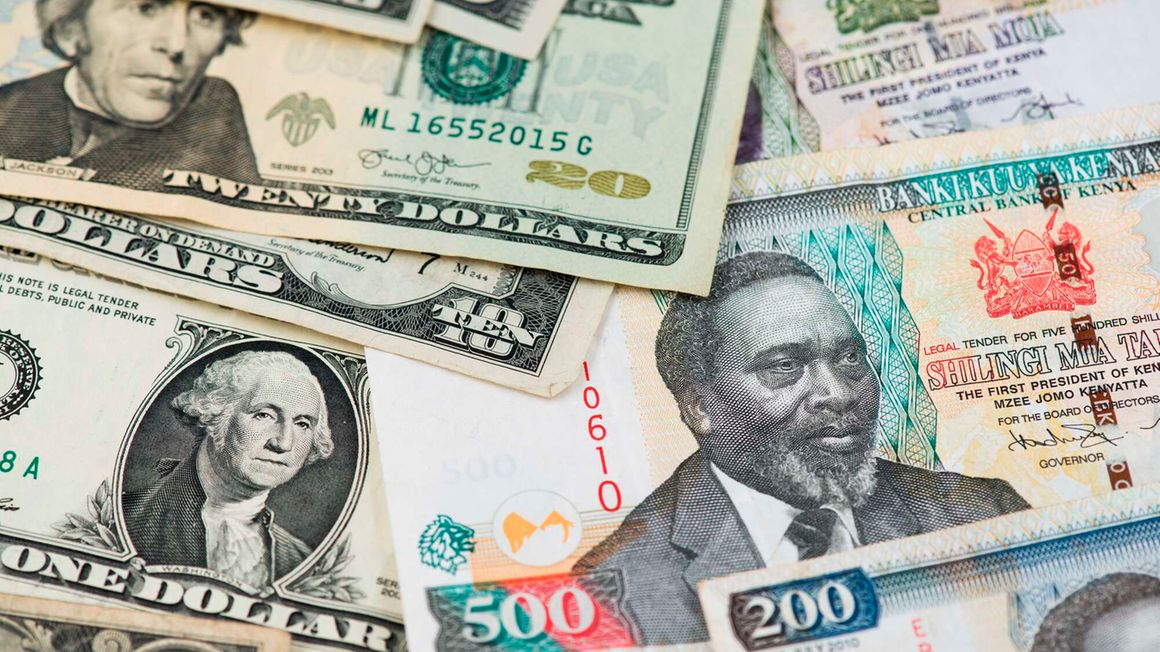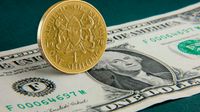
Consumers, debt pain as shilling breaks Sh126-mark on the dollar. FILE PHOTO | SHUTTERSTOCK
The shilling hit a new all-time low against the greenback after breaking below the 126-per-dollar mark, setting up consumers to costly imported goods such as cars, electronics and machinery as well as power bills.
The weakening of the local unit has triggered fears of a fresh round of inflationary pressure, which has become a political headache for the new government that is now importing basic goods duty-free to defuse social tension.
On Wednesday, the shilling closed trading at Sh126.1 against the dollar—a historic low—compared to Sh123.37 at the start of the year.
But commercial banks were selling dollars at between Sh135.80 and Sh137.50, a level that is encouraging some traders to start pricing their commodities in the US currency.
The shilling has been on the back foot since mid-last 2021 when it stood at Sh106.54 on the combination of weak inflows and strong dollar demand across sectors, traders said.
Read: Why is the Kenya shilling losing against US Dollar?
Kenya imports a wide variety of goods, including petroleum products, wheat, second-hand clothes, motor vehicles, vegetable oils and industrial machinery, whose costs are rising as the shilling weakens against the dollar.
Exporters such as tea and coffee producers are the winners in the shilling’s depreciation, which has the effect of making their products more competitive in the international markets besides boosting their revenue in local currency terms.
But the economy is at a loss from a stronger dollar given the country’s imports surpass exports, which left the country with a trade deficit of Sh1.4 trillion in the 11 months to November last year.
The Treasury will also feel the heat of the weakening shilling as Kenya’s debt repayment costs are also rising, a burden to taxpayers who are reeling from the mounting debts.
Of Kenya’s foreign debt of Sh4.5 trillion ($37.88 billion) at the end of December 68.1 percent was denominated in dollars.
On the flip side, the Treasury says Kenya will benefit from windfall tax receipts as costly imports lift shipment duties.
“A 10 percent depreciation of the Kenya shilling to the dollar would increase revenues and expenditures by Sh20.3 billion and Sh2.8 billion respectively in FY 2023/24 thereby reducing the projected fiscal deficit by Sh17.5 billion,” the Treasury said in its Budget Policy Statement.
But importers have warned of higher consumer prices in the wake of the strengthening of the dollar.
“If I am importing a consignment from China where I pay directly in dollars, it’s either I maintain my pricing and my margins go lower or I raise my prices to maintain the margins,” said Samuel Karanja, the general manager of Topmarine Logistics Agencies.
Inflation fell from 9.6 percent in October to 9.0 percent in January.
Kenya’s inflation has since June breached the target range of 2.5-7.5 percent, prompting the Central Bank of Kenya’s Monetary Policy Committee to raise benchmark interest rates to curb consumer spending.
This has forced many households, especially in the low-income segment, to reduce their shopping basket in an environment where firms have frozen salaries as they recover from Covid-19 economic hardships.
The rise in the cost of essential commodities has forced workers to cut back spending on non-essential items such as beer and airtime, ultimately hurting firms like East African Breweries Limited (EABL) and Safaricom.
The depreciating shilling threatens to pile more pressure on fuel prices, which has stoked public anger.
Petroleum prices have remained high due to geopolitical risks, prompting the government to retain subsidies in diesel.
The weakening of the local currency has been attributed by analysts to higher import costs coupled with increased debt service expenses.
The debt repayments have put pressure on Kenya’s forex reserves, which plunged to a decade low at Sh866.3 billion ($6.875 billion) on February 16 or an equivalent 3.84 months’ import cover.
The depreciation is also linked to a resurgence of the dollar this month after the US Federal Reserve signalled further interest rate hikes this year.
Read: Shilling for first time hits Sh116 against the dollar
The dollar index, for instance, is up nearly 1.0 percent so far in 2023.
Importers and merchant traders have continued to express discontentment over the availability of dollars as they purchase the currency at even higher margins.
Commercial banks have meanwhile sold dollars at higher margins to customers off the bat of unstable flows in foreign exchange.
A spot check of bank rates on Wednesday, for instance, showed that Stanbic Bank and Diamond Trust Bank traded dollars at Sh125.80 and Sh124.30 (buying) and Sh135.80 and Sh136.05 (selling) respectively.
The Kenya shilling official rate was meanwhile quoted at Sh126.15 at the close of trading on Wednesday.
The Central Bank of Kenya (CBK) has nevertheless retained its non-intervention stance on the exchange.
→ kmuiruri@ke.nationmedia.com






No comments :
Post a Comment